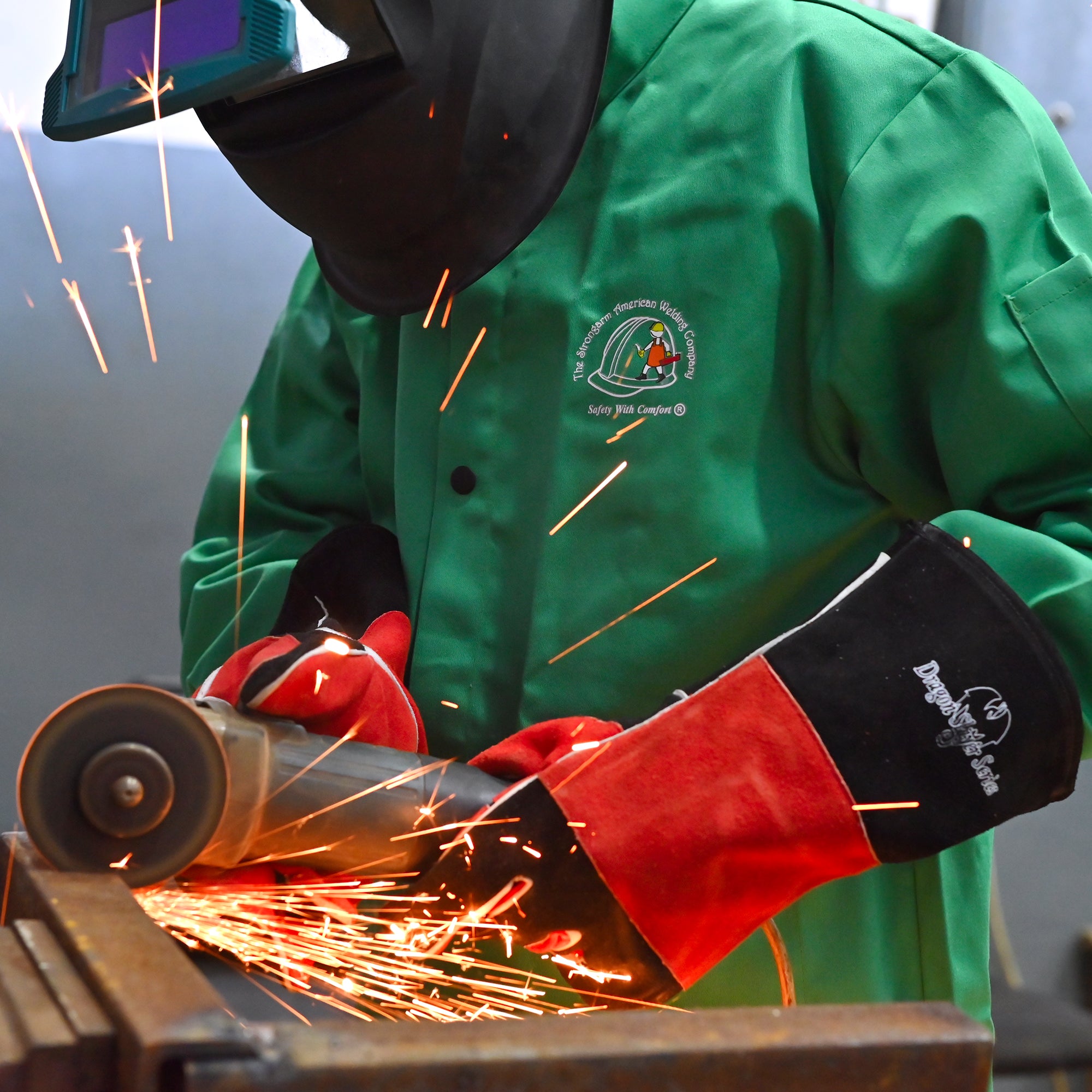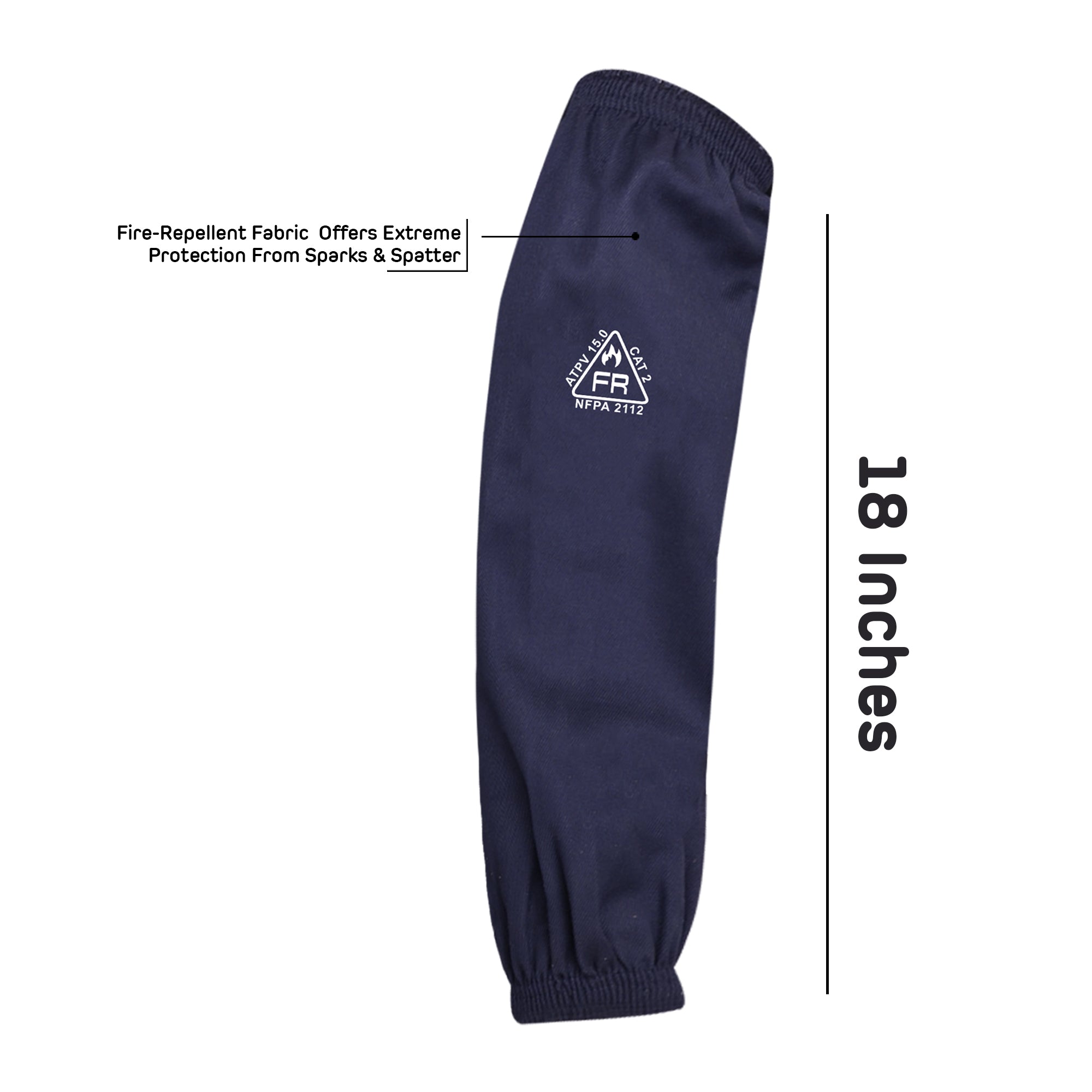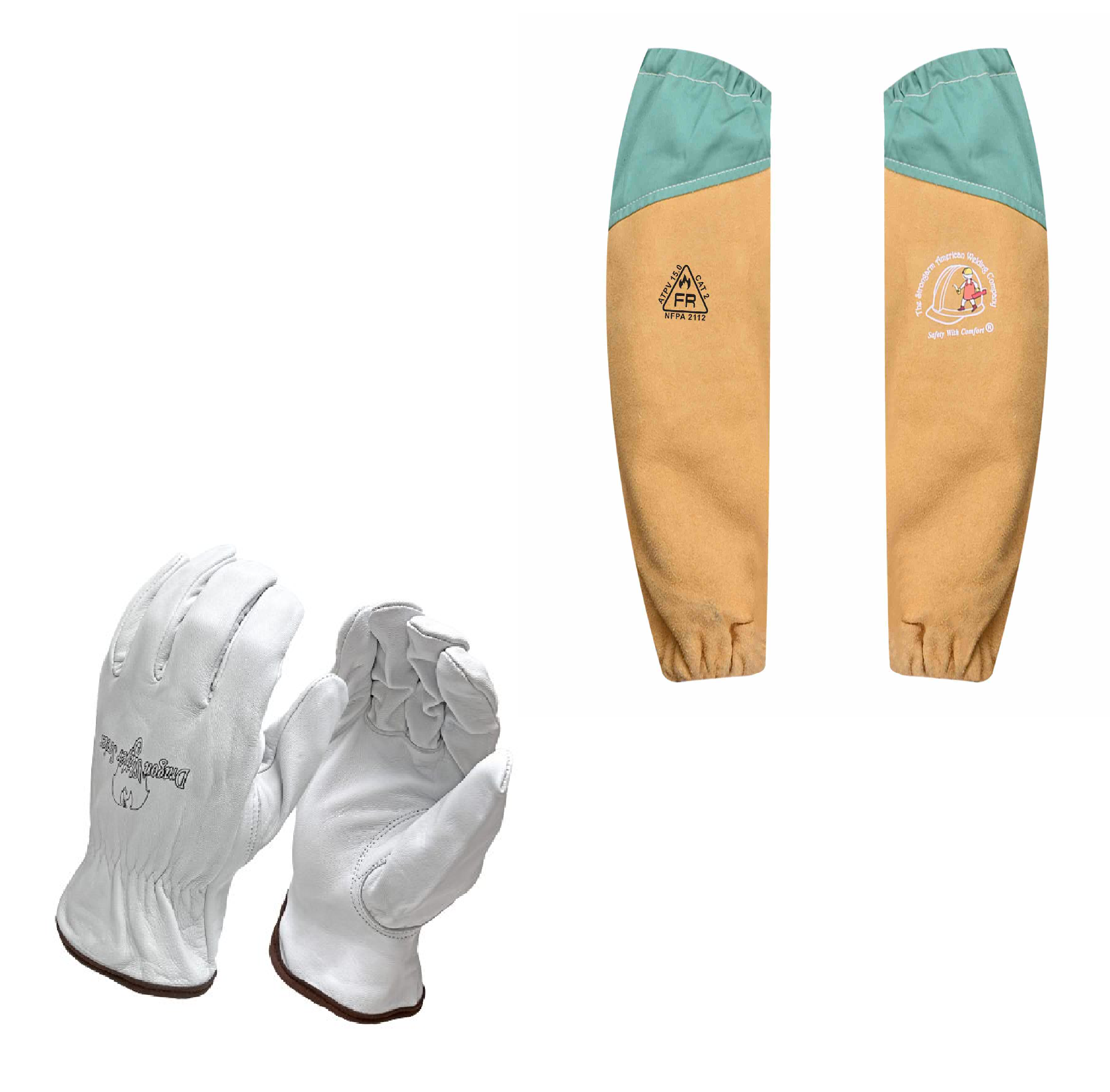Welding aprons have been a crucial part of personal protective equipment (PPE) for welders since the early days of metalworking. Over the years, the materials and design of welding aprons have evolved significantly to improve safety, comfort, and functionality. This article explores the evolution of welding aprons, comparing traditional leather aprons with modern welding apron materials and highlighting advancements in welding apron technology.
Why Choose Our Welding Apron?
At Strongarm Welding, Our Welding Apron is built for welders who demand both protection and comfort. Designed with advanced materials and expert craftsmanship, it ensures you stay safe, flexible, and focused on your work. Here’s what makes our apron stand out:
-
Premium Leather Protection: Crafted from top-grade leather that resists heat, sparks, and spatter.
-
Flame-Resistant Performance: Ideal for all welding types — from MIG to TIG — offering reliable defense against burns.
-
Adjustable Fit: Easy-to-use straps and buckles provide a secure, customized fit for long hours of use.
-
Lightweight Yet Durable: Designed for comfort without compromising protection or mobility.
-
Trusted by Professionals: The preferred choice of welders, fabricators, and industrial workers who value quality and safety.
The Beginnings of Welding Protection
The skill of welding has been important for thousands of years for making tools, weapons, and infrastructure. Early welding methods were simple, like hammering hot metal pieces together or using basic forges. However, these methods were dangerous because of the intense heat, flying sparks, and molten metal.
Early Metalworking and the Need for Protection
The art of welding can be traced back thousands of years to when humans first learned to join metals. Ancient civilizations, such as the Egyptians and Greeks, practiced early forms of metalworking that required protection from heat and sparks. Blacksmiths and metalworkers used rudimentary protective gear, including aprons made from thick, durable materials such as animal hides. These early aprons offered basic protection but were often cumbersome and restrictive.
The Rise of Leather
The need for specialized protective gear grew as welding techniques became more sophisticated during the Industrial Revolution. Leather emerged as the material for welding aprons due to its durability, heat resistance, and availability. Leather aprons provided a barrier against sparks, spatter, and heat, making them indispensable for welders.
The Dominance of Leather Welding Aprons
During the Industrial Revolution, welding became a more defined trade, and it became clear that people needed special safety gear. Leather was chosen as the best material for welding aprons because of its natural qualities, which made it perfect for the conditions of welding sites.
Characteristics of Leather
Leather is a natural material that offers several advantages for welding protection. It is thick and tough, capable of withstanding high temperatures and providing a significant barrier against molten metal and hot sparks. Leather also offers flexibility, allowing welders to move more freely than they could in earlier, more rigid protective gear.
Traditional Leather Apron Design
Traditional leather welding aprons were typically designed to cover the torso and upper legs and secured with adjustable straps. They were often made from cowhide, known for its strength and durability. While effective in providing protection, these aprons could be heavy and hot, contributing to welder fatigue during long work sessions.
The Shift Towards Modern Materials
As welding technology advanced, the limitations of traditional materials like leather became apparent, prompting the search for better options. Modern synthetic materials emerged to offer superior performance, comfort, and durability, marking a significant leap in welding protection and addressing the evolving needs of welders.
Technological Advancements and Material Science
The history of welding aprons has seen a notable evolution in materials. Significant advancements in material science occurred in the latter half of the 20th century, leading to the development of new synthetic materials with superior properties for welding protection. These advancements prompted a shift from traditional leather to more modern welding apron materials that offered enhanced performance, comfort, and safety, marking a pivotal moment in the evolution of welding aprons.
Introduction of Heat-Resistant Fabrics
Introducing heat-resistant fabrics such as Kevlar and Nomex marked a significant advancement in welding apron materials. Kevlar, known for its use in bulletproof vests, is exceptionally strong and heat-resistant, making it an ideal material for welding protection. On the other hand, Nomex, a flame-resistant material originally used in firefighter gear, also became popular for welding aprons due to its ability to withstand high temperatures and resist combustion. These advancements provided welders with a choice between materials that offer different levels of protection based on the specific requirements of their work.
Modern Welding Apron Materials
When we look at the evolution of welding aprons, it's clear that modern materials have revolutionized the industry. The history of welding aprons is marked by the transition from traditional leather to modern materials like Kevlar and Nomex. This advancement in welding apron materials has brought about a significant shift in the level of protection and comfort for welders.
Kevlar and Its Benefits
Kevlar welding aprons offer several advantages over traditional leather aprons. They are lighter, providing greater comfort and reducing fatigue during extended use. Kevlar is also more flexible, allowing for greater freedom of movement. Kevlar's exceptional strength also offers superior protection against cuts and abrasions, which is essential for welders handling sharp tools and materials.
Nomex and Flame Resistance
Nomex welding aprons are highly valued for their flame-resistant properties. Unlike leather, which can char and degrade when exposed to extreme heat, Nomex maintains its integrity, offering consistent protection. This makes Nomex aprons particularly suitable for environments where welders are exposed to high levels of radiant heat.
Other Synthetic Materials
Other synthetic materials like Kevlar and Nomex have been developed for welding aprons. These include aluminized fabrics that reflect radiant heat and carbon fiber blends that offer excellent heat resistance and durability. These modern welding apron materials provide welders with various options for different welding environments and applications. The evolution of welding apron materials has brought about a sea change in the industry, offering enhanced safety and comfort for welders.
Comparing Leather and Modern Welding Aprons
When choosing the right welding apron, consider the materials available, such as leather and modern alternatives. Each material has its benefits and drawbacks, so it's essential to compare them carefully before deciding.
Durability and Heat Resistance
While leather remains durable and heat-resistant, modern synthetic materials often surpass leather's overall performance. Kevlar and Nomex, for example, offer better protection against cuts and abrasions and superior flame resistance. Aluminized fabrics can reflect heat, reducing the heat absorbed by the welder.
Comfort and Flexibility
One of the primary advantages of modern welding aprons is their enhanced comfort and flexibility. Synthetic materials are generally lighter than leather, reducing the physical strain on welders. They also tend to be more breathable, helping to keep welders cooler and more comfortable during long work sessions.
Maintenance and Longevity
Leather aprons require regular maintenance to prevent cracking and drying out, while synthetic aprons are typically easier to care for and maintain. Modern welding apron materials are often more resistant to wear and tear, resulting in longer-lasting protective gear.
Advancements in Welding Apron Design
Recent advancements in welding apron design have focused on improving the wearer's comfort, maneuverability, and safety. These advancements aim to enhance overall performance and reduce the risk of workplace accidents.
Ergonomic Improvements
In addition to advancements in materials, the design of welding aprons has also evolved to enhance ergonomics and functionality. Modern aprons often feature adjustable straps and buckles, allowing for a more customized fit. Padded shoulder straps and waistbands distribute weight more evenly, reducing fatigue and discomfort.
Integrated Safety Features
Modern welding aprons incorporate additional safety features, such as built-in pockets for holding tools and accessories, reinforced areas for extra protection, and reflective strips for improved visibility. These design enhancements contribute to welders' overall safety and efficiency on the job.
Testimonials
John M. – Professional Welder
“The Strongarm Welding Apron is the best gear I’ve ever used. It’s durable, heat-resistant, and keeps me safe during every job.”
Sarah L. – Metal Fabricator
“Finally found a welding apron that’s both tough and comfortable! I wear it daily and love how it fits without feeling heavy.”
Carlos R. – Workshop Supervisor
“Strongarm’s leather welding apron is a game-changer. It gives my team the protection they need without compromising mobility.”
FAQs About Welding Aprons
Q1: What makes a Welding Apron essential for welders?
A Welding Apron protects your chest, legs, and clothing from sparks, molten metal, and heat exposure. It ensures both safety and comfort during long welding sessions.
Q2: Which material is best for a Welding Apron?
Leather remains the top choice because it resists heat, flame, and spatter. However, modern aprons also come in flame-resistant and heat-resistant fabrics that are lighter and flexible.
Q3: How do I clean and maintain my Welding Apron?
Avoid washing leather aprons with water. Instead, wipe them with a damp cloth and condition the leather regularly to prevent cracking and stiffness.
Q4: Are flame-resistant aprons better than leather ones?
Both are excellent. Leather welding aprons offer superior heat protection, while flame-resistant fabric aprons are lighter and more breathable for extended wear.
Q5: Can I get a custom Welding Apron from Strongarm?
Yes! Strongarm Welding offers custom welding aprons designed for professional welders — combining protection, comfort, and a perfect fit.
Conclusion
The evolution of welding aprons from leather to modern welding apron materials represents a significant advancement in welder safety and comfort. Traditional leather aprons provide reliable protection, but modern synthetic materials like Kevlar, Nomex, and aluminized fabrics offer superior heat resistance, durability, and flexibility. The ongoing development of new materials and design improvements promises to further enhance welding aprons' effectiveness, ensuring that welders can work safely and efficiently.
Strongarm welding is the leading welding manufacturer and provider in America. We have a team of trusted professional welders offering a wide range of welding aprons and gears to suit your needs. Contact us today for all your weldings essentials.











